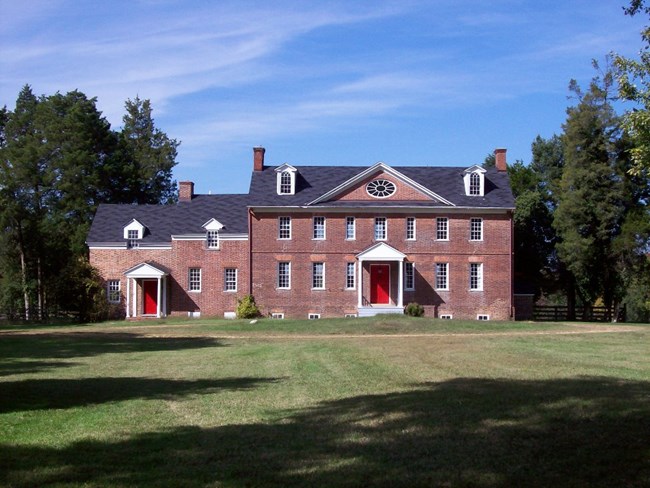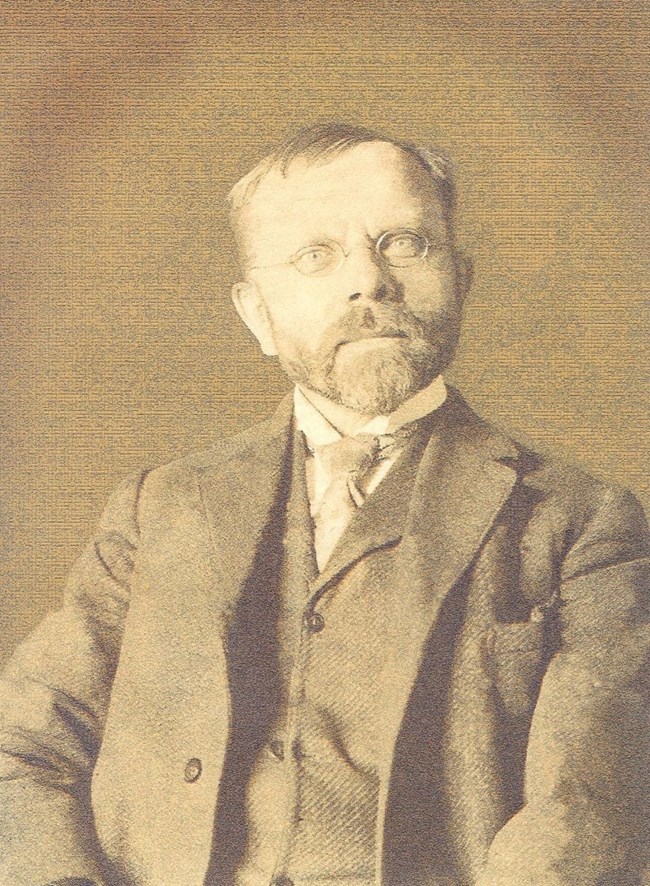
Aire, Broad Creek, and SilesiaIn 1706 the General Assembly passed the “Act for the Advancement of Trade”, designating towns in the provence, one was to be at Broad Creek on the Potomac, to be named Aire. “Lewis Landing”, was chosen as the location to create the new town, being as it had an established landing and warehouse. Not much is known as to the location of the town, however Lewis Landing was part of the property of Thomas Lewis, owner of Battersea. Unfortunately the town did not prosper and passed into history. The area that was Aire contiued to be called Broad Creek. In 1748 Humphrey Batts, owner of Want Water, built a warehouse on his property complete with weights and scales for weighing of tobacco, under the British Factorage System. With the end of the Revolutionary War, overuse of the land for tobacco, and siliting of the tributaries, Broad Creek was declining as a commercial center. By the mid-19th century, Broad Creek had lost what town structure it had, consisting mainly of loose collections of farms. In the 1890s with the influx of immigrants into the United States, the Broad Creek area recieved its fair share, many from Eastern Europe. Robert Stein, owner of Harmony Hall, petition to the courts in 1898 to rename the area, Silesia, the name of his birth city in Prussia. New businesses were established, such as fisheries, brickmaking, and gravel dredging in the creek. With the population growth and new businesses the town grew and by 1902 a post office was established. Prior to this the community would use the post office at the military post of Fort Washington. 
Harmony HallIn 1662, Humphrey Haggett patented a 500-acres parcel in Charles County, Maryland. It appears that he never resided on the property. Haggett, died in 1668 and the property passed to his wife, who later married Richard Fowke. Again no improvements were made to the property. Fowke chose to break the property up when he sold it in 1688. Philip Mason and Richard Iles both received 250 acres of Battersea. Mason received the parcel that the brick mansion sits upon. Again no improvements. In 1692, Thomas Lewis purchased the property, and there is archelogical evidence of an “earthfast”, wooden framed house set directly upon the ground, being built. This would be the first house of Battersea. There is some discord as to when the brick house was actually built. Some say it was constructed in 1723 when William Tyler owned the property others have the house being constructed later in 1760 by Enoch Magruder. The house when completed was 56 feet long, one room deep and two and one-half stories high. Today, there are two wings on the southside of the house, are later additions. Harmony Hall was a typical tidewater plantation, with a cash crop of tobacco. But during and after the American Revolution tobacco began to wane and being a good businessman, Enoch Magruder, began to look to other sources of money, flax seed and corn were grown instead of tobacco. Subsequent owners, either personnally or through tenants, continued to operate as a farm. In 1892 Robert Stein, purchased Harmony Hall, his brother Richard and his wife lived at the property. As the century came to a close Stein’s extended families began to join him in the Broad Creek Area. Charles Collins, purchased Harmony Hall in 1929 and later Want Water, had a desire of preservation, worked on restoring Harmony Hall and Want Water. In 1936, he had Historic and Archetitural Buildings Survey completed so that Want Water although gone survives in some form. He added on the grounds what is known as an English “ha-ha”. This landscape feature is designed to keep livestock from approaching the house. Want WaterThere is some conjecture that Want Water may have been built in 1690, however the first written reference to Want Water was that it was patented by Colonel Thomas Addison in 1708. The house 46 feet 4 inch, 1 1/2 story structure with a gambrel roof, gabled dormers, and exterior brick chimneys. Upon his death, his son John, sold it to Humphrey Batts, who made significant changes to the property. The most notable was the building of a 100 foot canal and a warehouse that was used as an inspection station under the Act for Amending the Staple of Tobacco. In 1749, a request for compensation was made to the Assembly for the warehouse and the canal. Batts was paid 2,000 pounds of Tobacco for the work. In 1763 the new owner Enoch Magruder, had the property resurveyed. It was found that the orginial 35-acres was now only 26 3/4-acres. In the 50 years since the original survey was completed, the creek had changed the land. It was found that 20-acres were now vacant between Want Water and Little Hall, to the north, the property was expanded to 46 3/4-acres. The Magruder/Lyles family would own Want Water until the 1876. Want Water again would have different owners until Charles Collins purchases the property about 1932. With the hopes of restoring the house to its former glory. Unforatuately this did not come to pass, however detailed records and photos of the property were made. Today only the north and south walls remain standing. |
Last updated: March 29, 2020
